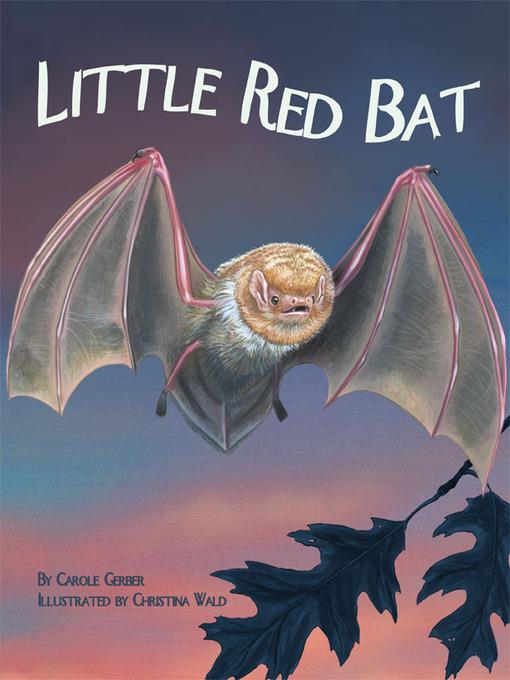
Little Red Bat
فرمت کتاب
ebook
تاریخ انتشار
2010
Lexile Score
600
Reading Level
0-2
ATOS
3.1
Interest Level
K-3(LG)
نویسنده
Christina Waldناشر
Arbordale Publishingشابک
9781607180944
کتاب های مرتبط
- اطلاعات
- نقد و بررسی
- دیدگاه کاربران
نقد و بررسی

June 1, 2010
K-Gr 2-On a chilly fall day, a tree bat wonders where to spend the winter. Should she stay in the forest or go? Seeking advice, she chats with a squirrel, deer, rabbit, chipmunk, mouse, wild turkey, and sparrow, and they each take a turn explaining how they spend the winter and warn the bat of possible dangers should she decide to stay. Gerber's style reflects her prior experience in writing science and reading textbooks; her word choices read like a basal text. Dialogues between the bat and the animals follow a similar pattern, and after a while become monotonous. Wald's realistic painterly illustrations nicely establish the seasonal forest setting. Fact-based activities that delve into bat adaptations and life cycles are appended. An online link leads to more cross-curricular connections. This story explores a lot of ground, from seasons to migration and to animal habits. For other informational picture books with more of an emphasis on bats, turn to Sandra Markle's "Little Lost Bat" (Charlesbridge, 2006) and Nicola Davies's "Bat Loves the Night" (Candlewick, 2001). "Little Red Bat" seems more suited for collections where curricular tie-in materials are needed."Lynn K. Vanca, Akron-Summit County Public Library, Richfield, OH"
Copyright 2010 School Library Journal, LLC Used with permission.

April 15, 2010
Grades 1-3 Generating sympathy for a bat isnt always easy. Gerber pulls it off, though, thanks to some rewarding research and an engagingly repetitive structure. A little red bat hangs among the autumn leaves and wonders if she should stay in her tree or fly south. One by one, she meets a cast of woodland creatures, all of whom have their own plan: the squirrel has stored enough nuts to stay put, the deer will take shelter beneath trees, the field mouse will tunnel underground, and so on. Aside from their unusually expressive faces, Wald gives each animal a realistic look, and adds frequent circular insets to give a close-up of the animals features. The forest is especially detailed, with a multicolored floor of intersecting fallen leaves. As each animal departs, it leaves the bat with a warning: if she stays, watch out for owls, raccoons, oppossums, hawks, foxes, humans, and cats. Its a lot to think aboutenjoyably visualized in a spread in which all predators appear at oncebut the little bats careful final decision is a wise one.(Reprinted with permission of Booklist, copyright 2010, American Library Association.)

























دیدگاه کاربران